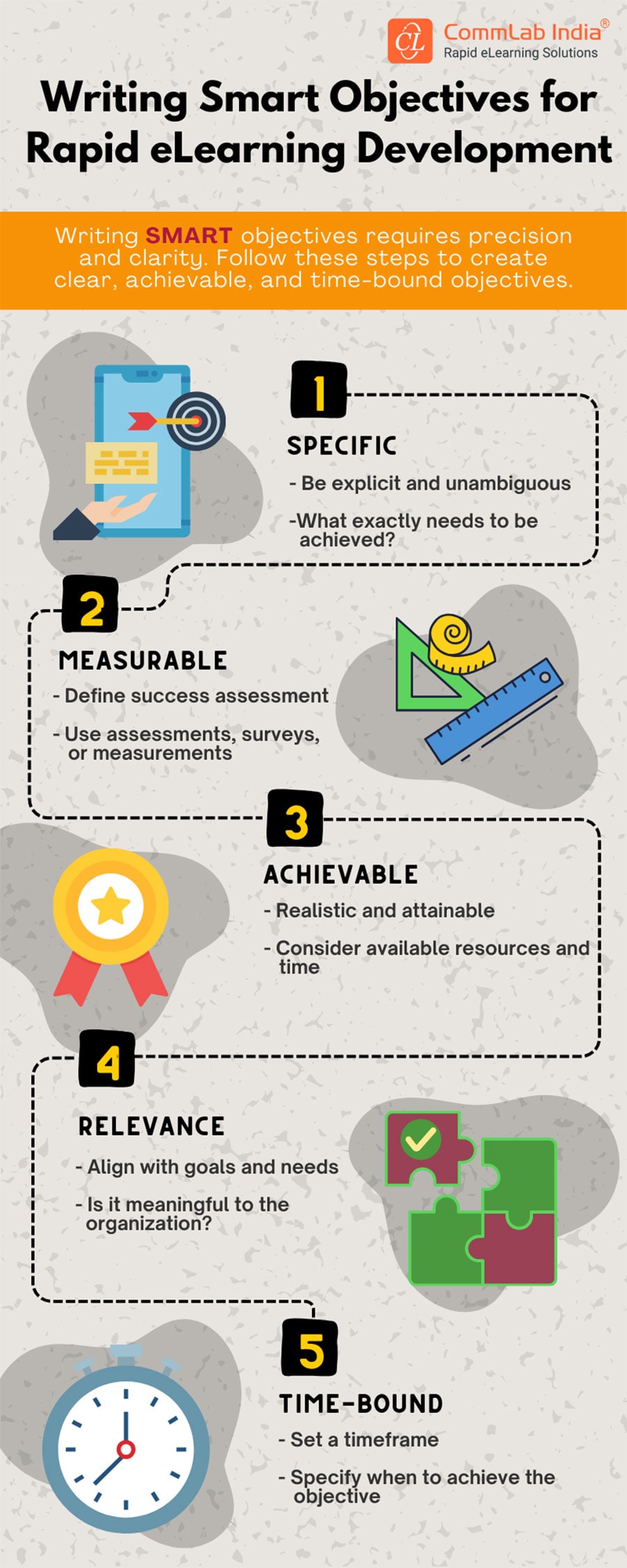How Learning Objectives Ensure Best Outcomes in eLearning [Infographic]
![How Learning Objectives Ensure Best Outcomes in eLearning [Infographic] How Learning Objectives Ensure Best Outcomes in eLearning [Infographic]](https://blog.commlabindia.com/hubfs/blogs/learning-objectives-framing-importance-infographic.jpg)
Think about preparing a meal without a recipe. You might just start cooking, experimenting with ingredients, and randomly combining flavors. While this can be fun and creative at first, it often results in a haphazard or unappetizing meal. But having a proper recipe to make a creamy pasta or a fluffy cake ensures a delicious and satisfying outcome.
Similarly in an eLearning course, having a goal, a learning objective is important.
What are Learning Objectives?
Learning objectives in eLearning refer to the course's intended learning purpose. What learners will learn at the end of the course? Any training program's main objective is to close the performance gap between learners' expected and actual performance by equipping them with the knowledge, abilities, and attitudes they need so learning objectives are crucial to this process.
Do you want to know what the characteristics of high-performing learning objectives in rapid eLearning development are?
They're SMART! The acronym stands for: Specific, Measurable, Achievable, Relevant, and Timely.
Here’s a quick infographic to give you an overview.
Why Establish Learning Objectives?
Setting the correct learning objectives allows the training content to align with the expected performance outcomes of learners. Apart from determining whether the training is effective in assisting learners in accomplishing their learning goals, learning objectives aid in the design and development of a course by setting the scope of the content, selecting an instructional design strategy, deciding the cost and duration, and developing appropriate assessments.
→ Get Now: Instructional Design 101 [eBook]
Imagine a scenario where a sales team is undergoing training. Without well-defined objectives, they might study an array of topics, from product knowledge to negotiation skills, without a clear focus. However, by establishing specific learning objectives, such as increasing closing rates by 15% in the coming quarter, the training program gains focus. Each module, whether on product features or sales techniques, is intended to help achieve this goal.
Learners understand what they are attempting to accomplish, and their efforts are directed towards a unified, results-oriented learning experience. Clear learning objectives, in this way, provide a roadmap for learners and ensure that training has a purpose, ultimately benefiting the organization's performance and growth.
However, the most important thing to remember is that learning objectives should always be in line with the fundamental business goals. Only then will every facet of your online learning be directed toward accomplishing the stated objectives.
Don't you want to know a little more about learning objectives now that you know they're important? Perhaps you could learn how to frame learning objectives? Let's get going!
- Use specific and measurable verbs when writing them.
- Make sure the learning objectives cater to the requirements of the learners.
- Ensure that the learning objectives are feasible and doable.
- Use simple language and keep them short.
- If several, organize them into sub-categories.
Your Next Step!
When learning objectives are defined the right way, it paves a way for effective creation of rapid eLearning courses which will upskill your employees and skyrocket your training initiatives.
Apart from defining your learning objectives, an essential step is to explore the most effective methods for developing high-quality eLearning courses. If this is what you're seeking, we have an invaluable eBook that can provide you with the guidance you need right at your fingertips to ace instructional design for creating engaging eLearning experiences.







![Top 3 Instructional Design Strategies That Pair Perfectly with Rapid eLearning [SlideShare]](https://blog.commlabindia.com/hubfs/Imported_Blog_Media/instructional-design-strategies-rapid-elearning-slideshare.png)